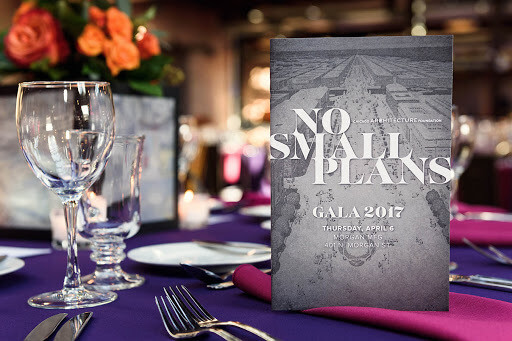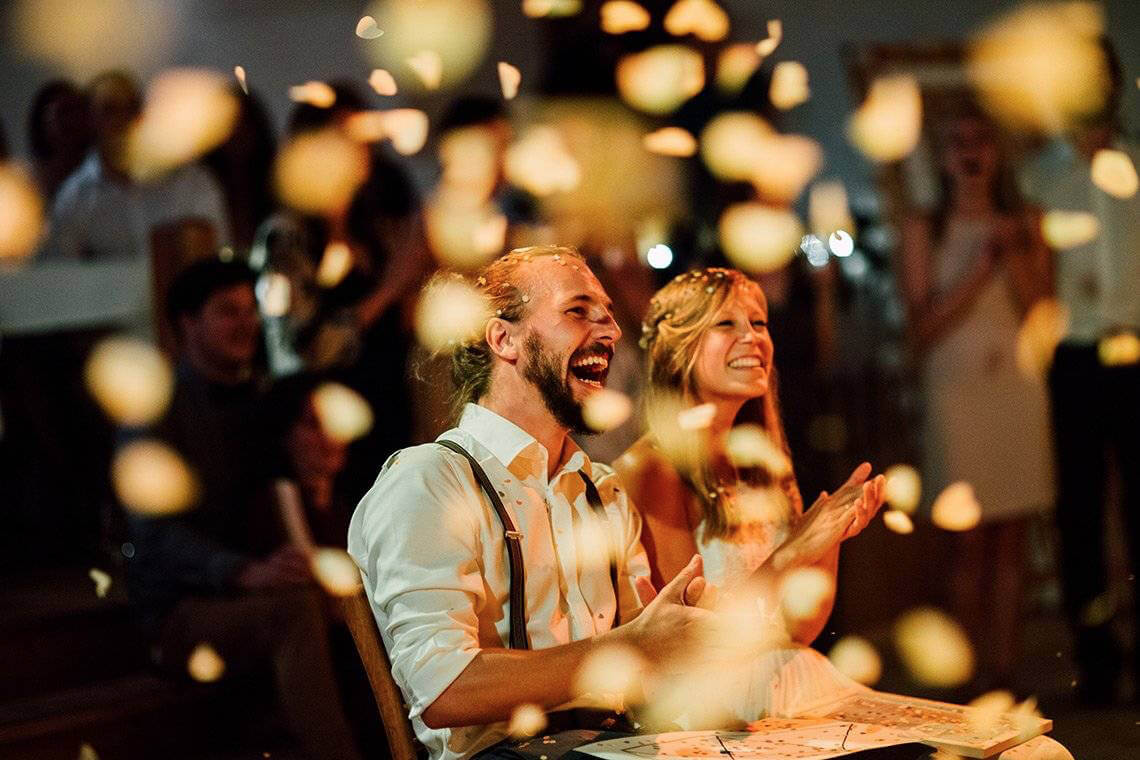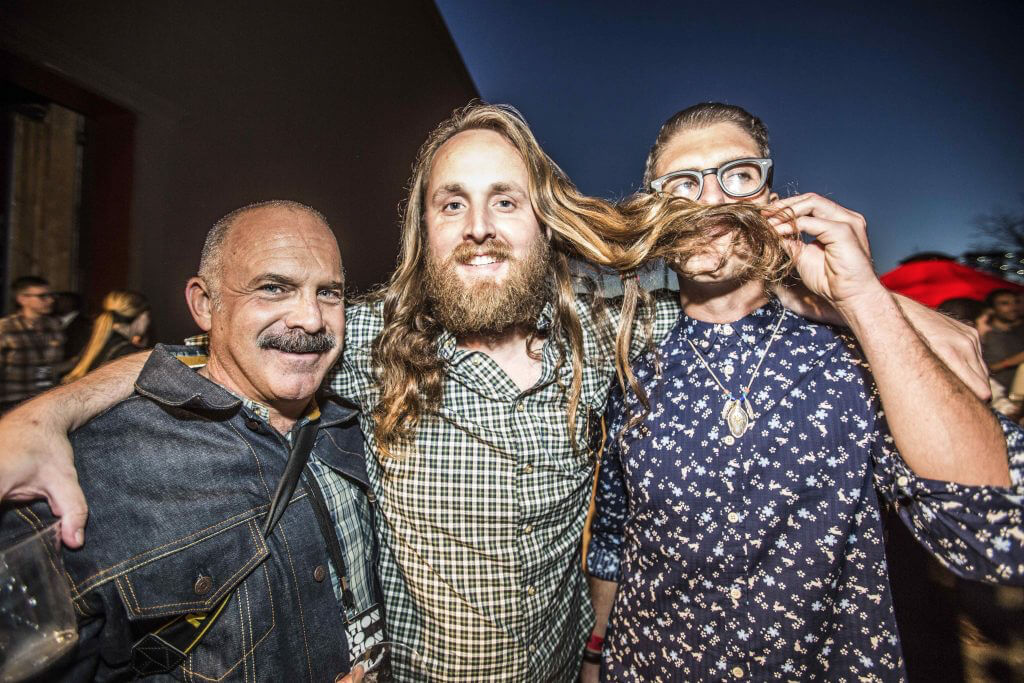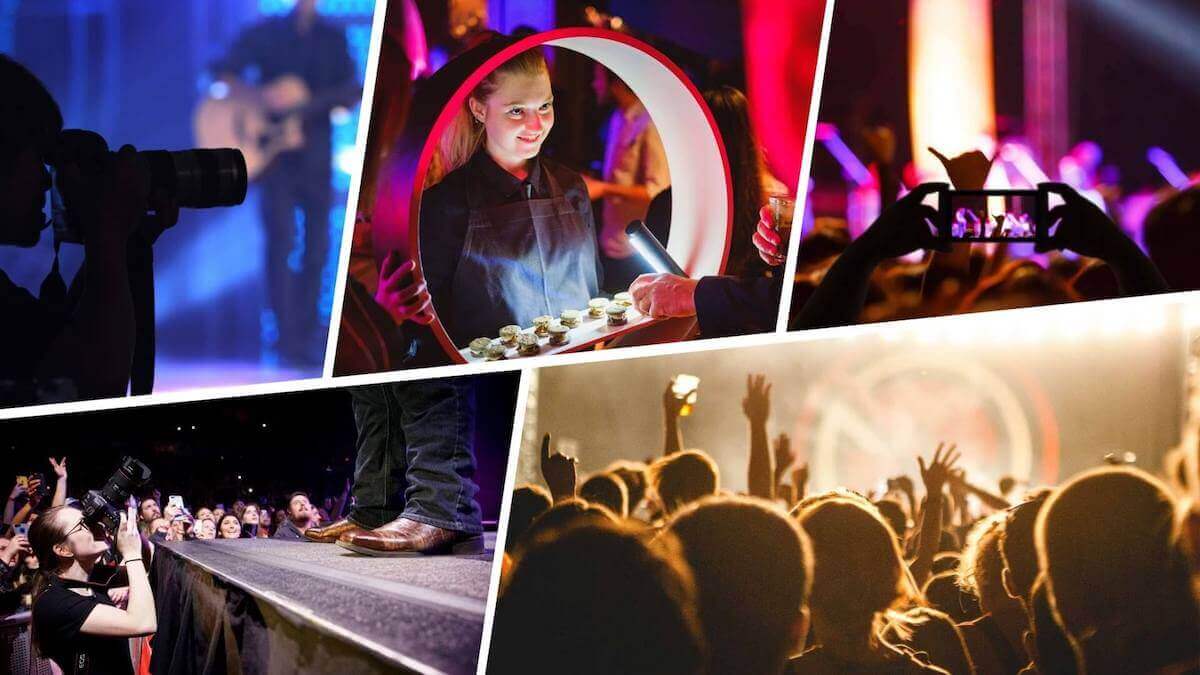If you are starting a career in photography, you will inevitably be paid to shoot some type of event. Events can differ vastly ranging from weddings to corporate events to concerts. However, we’ve created a list of a few fundamental tips that will help you capture better photos no matter what event you are shooting. In this article, we discuss how to prepare for shooting an event, what gear and settings you will use, and how to capture great photos on the day of the event.
Event photography tutorial
Prepare for the event
In the days and weeks leading up to the event that you are shooting, it is important to prepare as much as possible. First and foremost, have a meeting with your client to ask questions and get on the same page about what their expectations are. If you are meeting with new, potential clients here are a few tips for better client meetings.
Event Photography advice for client meetings
What kind of images do they expect? What are the most important moments to capture? Where will these photos be used? What style of photography do they like or not like? These are just a few example questions that will help you get a clearer direction of how to photograph the event.
You will also want to research the event space and location. Look up the specific event space online. This will often bring up photos from past shoots, the location, and the natural lighting that will give you an idea of what you will be working with.
Best lens for Event photography
Gear up for event photography
Another critical part of preparation is determining what gear you will be shooting with. There are various types of camera lenses to choose from so how do you narrow it down? When it comes to shooting events, the best type of lens is one that is effective and efficient.
Prime lenses can be incredibly sharp and create beautiful depth of field and bokeh. However, switching between prime lenses can consume time. In event photography, the action will not slow down for you to be able to change lenses and get the shot.
This is why a quality zoom lens is typically a great balance between efficiency and effective. Zoom lenses allow you to quickly change your focal length without changing lenses so that you do not waste time and can get every shot you need. Zoom lenses can capture wide shots, close up shots, and medium shots in one lens. Learn more about zoom lenses and their benefit in our lens breakdown video below.
Best lens for event photography ● Event Photography Gear ● Subscribe on YouTube
Another thing to consider is whether or not you will utilize an artificial light like a flash. This may depend on the event you are shooting as well as the light availability. In dark locations or night events, flash can help you properly expose otherwise dark shots. But flash can also be distracting and disruptive so be sure to talk to your client if you plan to use one.
If you do opt for the flash, consider bouncing your flash rather than pointing the flash directly at your subjects or event space. Learn how to bounce light from a flash in this video tutorial by Adorama below.
How to Bounce Flash Wedding Receptions and Events: Breathe Your Passion with Vanessa Joy
One of the most important, but easily overlooked pieces of gear you absolutely need is extra batteries and extra memory cards. When shooting events, your camera will be on and shooting for hours. Bring extra batteries to quickly switch out dead batteries for fresh ones.
SD cards will also quickly fill up when shooting events. This is especially true when shooting in RAW. Pack more memory cards than you think you will need for ease of mind.
Related Posts
How to do event photography
Know the agenda
In meeting your client, a part of your conversation will be the agenda of the event. Take notes of the agenda to help you get a visual understanding of what you will be capturing. Events can vary greatly. Weddings and family events will have moments to capture where a couple or person is being celebrated.
Corporate event photography can have exercises or games you will want to capture. Knowing the agenda will help you visualize the event. This will help you with our next tip which is to create a shot list.
Event photography tips and tricks
Create a shot list
Although much of event photography is based on instinct in capturing real time action, creating a shot list is important for remembering to capture critical shots. A bride and groom's first dance, a CEO’s speech, or a grandfather blowing out his birthday candles are all crucial moments to capture that your client will be expecting.
Using software like StudioBinder’s shot listing app can help you create an organized list of essential shots. You can also use the app to mark the shot size and type. This will help you capture a variety of shots from wide shots of the event space to close-up shots of guest emotions.
To get a better idea of how different shot types can be used to capture an event, check out the video below in which photographer Mik Milman breaks down the 6 shot types he uses for events.
Event Photography Tips and Tricks (6 Shot Types)
There are no set rules when it comes to shooting events. This may mean organizing a shot list based on the agenda or organizing a shot list based on shot types. Utilize a shot list in whatever way will best benefit you on the day of the shoot.
Best camera for Event photography
Shoot in RAW
To give yourself flexibility in the editing phase of photography, you will want to shoot your photos in RAW. The best camera for event photography will typically be professional DSLR or mirrorless cameras which allow you to shoot in RAW. Shooting in RAW retains all the visual information outside of the settings that you shoot in.
This allows you to make adjustments when editing that can save a photo. This video by Adorama simply breaks down the benefits of shooting in RAW.
Why I Shoot Raw: Event photo shoot tips
Event photography techniques
Shoot in Burst Mode
Speaking of event moments that only last a few seconds, shooting in burst mode will help you capture these moments. Burst mode allows you to capture multiple shots in rapid succession by merely holding down the shutter.
Burst mode comes in handy when shooting fast moving events like sports photography or concerts. It should also be used when capturing moments that last a few seconds like the bride and groom’s first kiss or someone blowing out birthday candles. Burst mode will capture every frame of action in these quick and crucial moments.
Related Posts
Event photo shoot advice
Get there early
When it comes to the day of the event, the last thing you want to do when shooting an event is show up at the same time the guests do. Get to the event early enough to give you time to set up your camera and scout the location.
Typically, events will also have setup and decoration details that are easier to capture prior to the guests arriving.

Capture details in event photograph
Getting to the event early will also help you capture the moments when guests first arrive. This is one of your best opportunities to capture emotional interactions as guests greet and welcome each other.
How to become event photographer
Capture emotions and expressions
Capturing emotions is something you should strive for long after the guests arrive. These moments are typically what clients do not expect to see but become their favorite photos.
You may not always know when a person is going to have an emotional reaction. So the best way to capture these expressions is to set up your shot and wait for them to occur naturally. This will allow you to properly compose your photo while getting a genuine expression.
It is also important to read the room. Understand where things are happening and where things are quiet. If people are having a dance contest on the dance floor, don’t be by the dining tables. This awareness is one of 5 advanced tips from Mik Milman’s tutorial video below.
Event Photography Tips and Tricks (advanced)
Remember that the reactions of guests will depend greatly on the event you are shooting. Weddings will have very emotional guests who can even be on the brink of tears. Corporate event photography shoots can have guests that are filled with curiosity by a guest speaker. Be aware of the different emotions that will be present in the event you are shooting.
How to do event photography
Shoot candid photos
Candid photos are the most difficult to plan for, but often the most beloved by clients. Capturing candid photos is a matter of timing, instinct, and luck. As we talked about in the previous section, reading the room will help you be at the right place at the right time to get the perfect candid shots.
Once you get a feel for the room, combine this with your knowledge of the event agenda. This will help you anticipate the action and where to be to capture genuine, candid shots.

Event photography examples
Capturing candid moments will also become more instinctual with experience. Becoming a fly on the wall and anticipating where the action will be will help you capture people as they naturally are.
Event photo shoot tips
Shoot posed photos
Candid photos are great, but they shouldn’t be the only thing you capture. Clients and guests will want to see posed photos. Guests may even come up to you and ask you to take their photo with others. Be prepared to transition between shooting candid moments and posed photos throughout the event.
When shooting posed photos, don’t be afraid to direct your subjects. Tell friends to embrace each other for a more natural posed photo. Also find unique backgrounds to shoot your subjects against.

Event photography examples
A few general tips for posing people for a photo is to direct their body to face the camera at an angle. This is typically a more flattering position. Give your subjects something to do with their hands when they are posing. This can be holding their wine glasses, embracing each other, or even simply putting their hands in their pockets. Finally, break up the seriousness by allowing for some fun or goofy pictures. This will help your guests loosen up for later shots.
Related Posts
How to become event photographer
Be a ninja
As an event photographer, you are there to capture the event without distracting the guests. To do this, be like a ninja not the paparazzi. Move slyly around the event space to avoid disrupting the event. Try not to obstruct the view of guests while shooting.
Of course, this does not mean to stay put. Shooting from one, safe position will result in a lack of variety in your shots. Read the room and be aware of moments when you can move quietly and slyly. When guests are moving about freely, join the action without causing any disruptions.
Finding a balance between moving freely and being a ninja will help you get the best shots in the least disruptive way.
UP NEXT
How to start a photography business
Shooting events can be an incredibly lucrative facet of a photography business. To learn more about the ins and outs of starting a photography business, check out our next article. We dive into everything from a business plan to shooting to clients in our guide to starting a photography business.m
Up Next: Starting a photo business →
Showcase your vision with elegant shot lists and storyboards.
Create robust and customizable shot lists. Upload images to make storyboards and slideshows.

Wow, some fantastic ideas here.
Event photography is particularly of interest to me as I own an event photography agency in Brooklyn, NY.